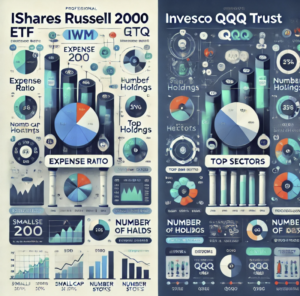
By ATGL
Updated June 26, 2024
For forex traders seeking to elevate their game, currency correlations unlock a wealth of strategic possibilities and risk management techniques. By grasping the intricate relationships between different currency pairs, traders can develop more reliable strategies, manage risk effectively, and uncover unique profit opportunities.
Whether you’re a forex newbie or a seasoned pro, mastering correlations in the financial markets could be your best bet for more confident, strategic trading.
Understanding Currency Correlations in Forex
Market correlation measures how different assets or markets move in relation to each other. It plays a crucial role in diversification and risk management across various financial instruments. Currency correlations in forex trading refer to the interconnected price movements between different currency pairs. These relationships can be positive, negative, or neutral, and understanding them is necessary for making informed trading decisions.
Reading Correlation Tables and the Pearson Correlation Coefficient
Correlation tables are essential tools for forex traders, providing a quick snapshot of how different currency pairs move in relation to each other. These tables typically use the Pearson Correlation Coefficient, a statistical measure that quantifies the strength and direction of the relationship between two variables.
The coefficient ranges from -1 to +1, where:
- +1 indicates a perfect positive correlation
- -1 indicates a perfect negative correlation
- 0 indicates no correlation
For example, a correlation of +0.8 between two currency pairs suggests a strong positive relationship, meaning they tend to move in the same direction 80% of the time.
Types of Correlations
Understanding the different types of correlations is important for developing effective trading strategies:
- Positive Correlation: When two currency pairs move in the same direction.
- Negative Correlation: When two currency pairs move in opposite directions.
- No Correlation: When there’s no discernible relationship between the movements of two currency pairs.
Examples of Positive Correlations in Forex
Some common examples of positively correlated currency pairs include:
- EUR/USD and GBP/USD: Both pairs often move in the same direction due to the shared influence of the U.S. dollar and the economic ties between Europe and the UK.
- AUD/USD and NZD/USD: These pairs frequently exhibit positive correlation due to the similarities between the Australian and New Zealand economies, both of which are commodity driven.
Examples of Negative Correlations
Negative correlations can be equally valuable for traders. Some examples include:
- EUR/USD and USD/CHF: These pairs often move in opposite directions due to the USD being on opposite sides of the pair.
- USD/JPY and Gold: The Japanese yen is often considered a safe-haven currency, similar to gold. When global uncertainty rises, both the yen and gold tend to strengthen against the USD.
Developing a Currency Pairs Correlation Trading Strategy
Armed with knowledge about forex correlations, traders can develop sophisticated strategies to capitalize on these relationships. Here are two popular approaches.
Forex Hedging Strategy Based on Correlated Pairs
Hedging is a risk management technique that involves opening positions in correlated currency pairs to offset potential losses. For instance, if a trader has a long position in EUR/USD and is concerned about potential downside risk, they might open a short position in GBP/USD, which is positively correlated with EUR/USD.
This strategy can help mitigate losses if the market moves against the primary position. However, hedging also limits potential profits and may incur additional transaction costs.
Quasi-Arbitrage in Forex Trading
Quasi-arbitrage, also known as statistical arbitrage, is a more advanced strategy that aims to profit from temporary price discrepancies between correlated currency pairs. This approach involves:
- Identifying strongly correlated currency pairs
- Monitoring their price movements for divergences
- Opening positions when the correlation temporarily breaks down
- Closing positions when the correlation reverts to its normal state
For example, if EUR/USD and GBP/USD typically have a strong positive correlation but suddenly start moving in opposite directions, a trader might go long on one pair and short on the other, anticipating that the correlation will eventually return to its normal state.
Profit From the Forex Market With Above the Green Line
While trading correlations can be a powerful tool in forex trading, you should still approach it with caution and a solid understanding of the market dynamics. Here are some tips to help you succeed:
- Stay informed: Keep track of economic indicators, geopolitical events, and central bank policies that can affect currency correlations.
- Use multiple timeframes: Correlations can vary across different timeframes, so analyze both short-term and long-term charts to get a comprehensive view.
- Combine with other analysis: Don’t rely solely on correlations. Incorporate fundamental and technical analysis to validate your trading decisions.
- Practice risk management: Always use stop-loss orders and proper position sizing to protect your capital.
- Be adaptable: Correlations can change over time, so regularly review and adjust your strategies accordingly.
- Leverage technology: Use trading platforms and tools that provide real-time correlation data and alerts to stay on top of market movements.
By mastering trading correlations in forex, you can gain new opportunities and enhance your overall trading performance. Remember that successful trading requires continuous learning, practice, and adaptation to ever-changing market conditions.
At Above the Green Line, we’re committed to helping traders of all levels develop the skills and knowledge needed to navigate the complex world of forex trading. Our expert-led courses and resources can provide you with in-depth insights into correlation trading and other advanced strategies, empowering you to make more informed decisions and potentially increase your profitability in the forex market.
Whether you’re a day trader looking to capitalize on short-term price movements or a swing trader aiming to ride longer-term trends, understanding and leveraging currency correlations can give you a significant edge in the world of forex trading.
Start exploring the power of correlation trading today, and take your forex trading to the next level when you join our community. See what a membership with Above the Green Line can do for you.






